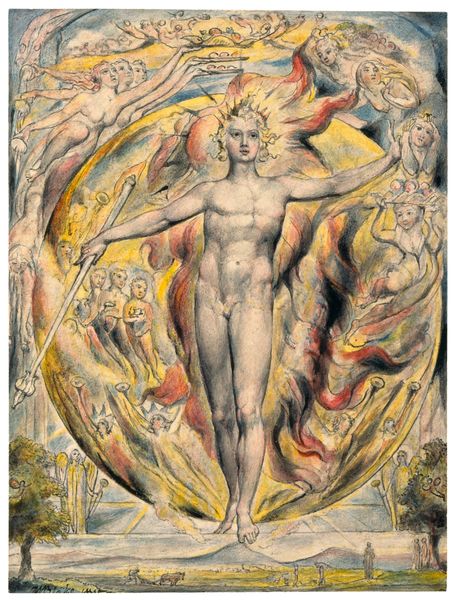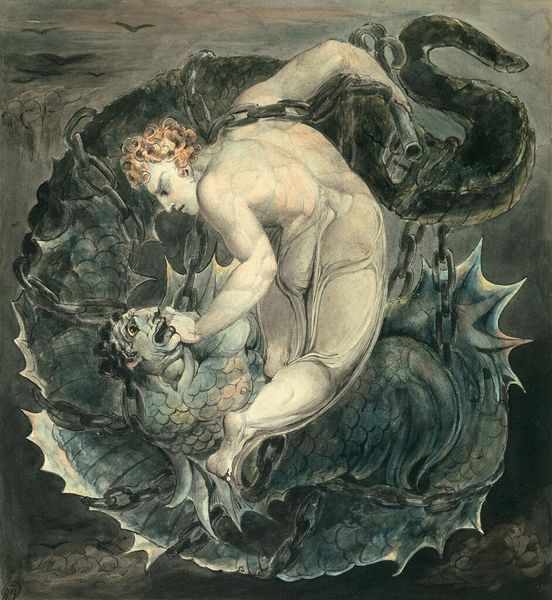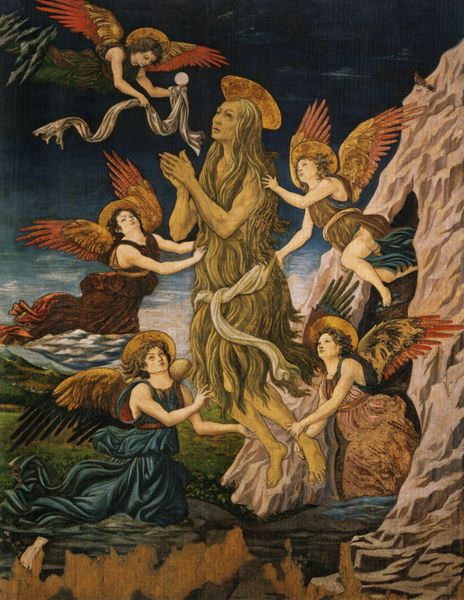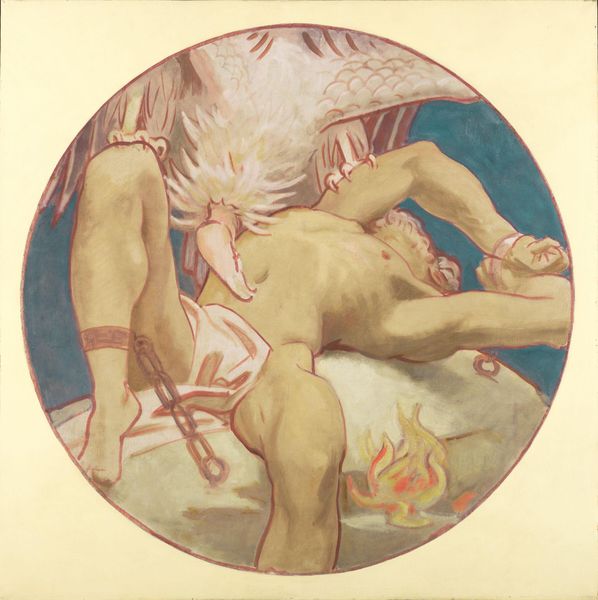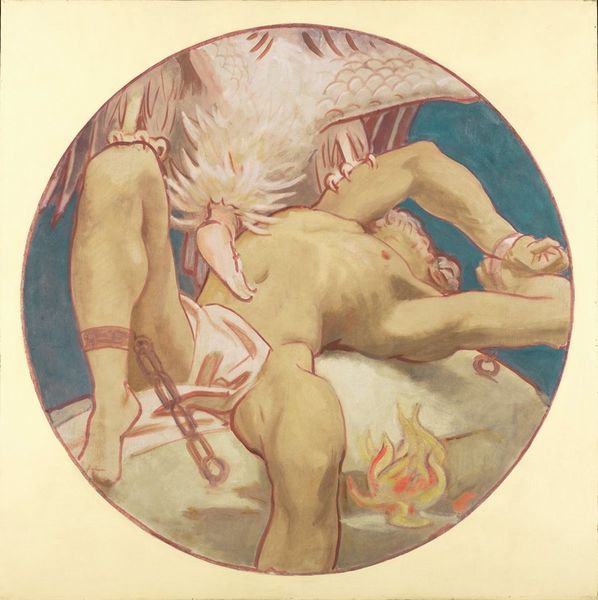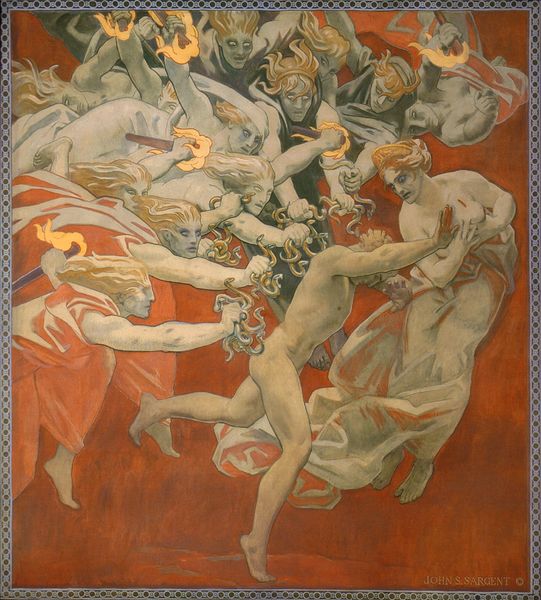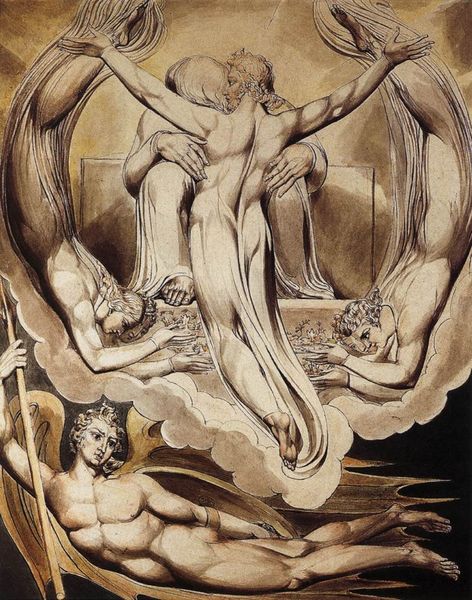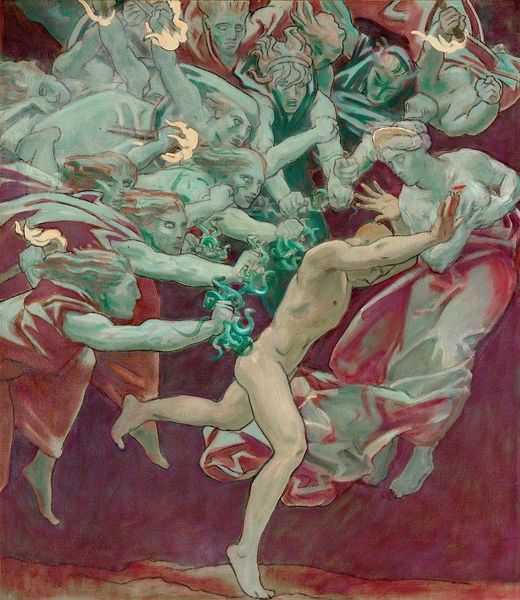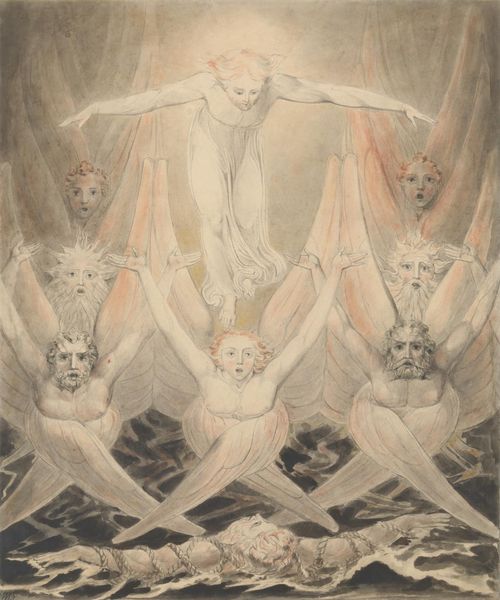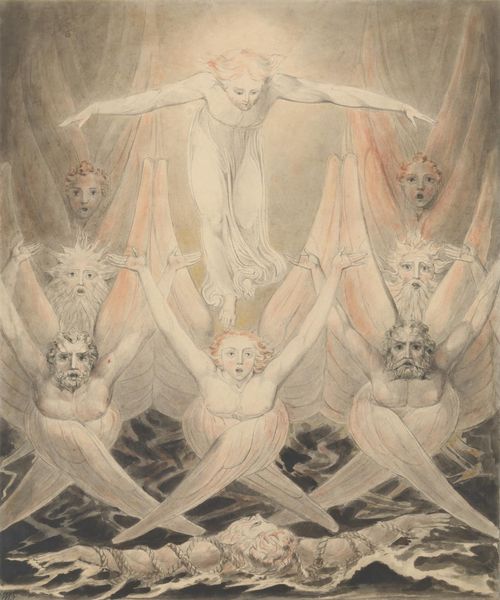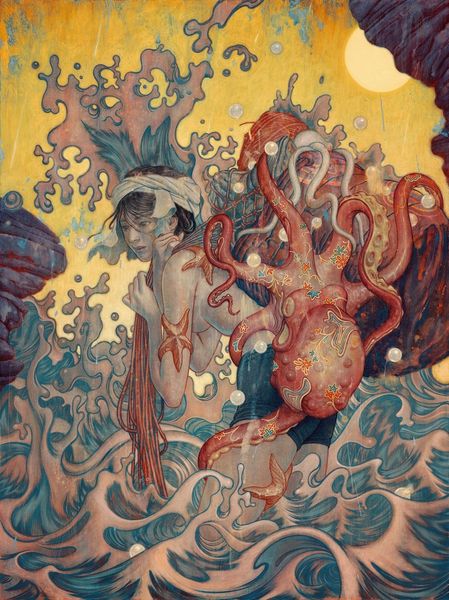
Dimensions: support: 1524 x 1676 mm
Copyright: CC-BY-NC-ND 4.0 DEED, Photo: Tate
Editor: So, this is Ernest Procter’s "The Zodiac", currently residing at the Tate. The swirling figures and celestial backdrop definitely give it a mystical, almost otherworldly feel. What do you see in this piece, beyond just the surface-level imagery? Curator: The zodiac signs are anything but neutral. This work echoes anxieties about social order following WWI. Procter, like many artists, grappled with shifts in power and gender roles. The female figure, seemingly Diana, challenges traditional allegories of virtuous passivity. Editor: So, you’re saying this isn't just about astrology, but about the era's anxieties? Curator: Precisely. The Zodiac becomes a stage for renegotiating identity. Consider how Procter subverts classical depictions of heroism by placing a woman archer at the forefront. The constellation of zodiac signs are placed to revolve around a woman instead of a man. Editor: That’s fascinating. It really makes you think about who gets to write history, doesn't it? Curator: Exactly. And how art can rewrite it.
Comments
Join the conversation
Join millions of artists and users on Artera today and experience the ultimate creative platform.
tate 6 months ago
⋮
This painting cleverly combines representations of the twelve animal and human symbols of the Zodiac into a dynamic composition. The twelve symbols, beginning at the top left are: Aquarius the water-carrier: Pisces the fish: Aries the ram; Taurus the bull, Gemini the twins; Cancer the crab; Leo the lion; Virgo the virgin holding the balancing scales of Libra; Scorpio the scorpion; Sagittarius the archer; and Capricorn the goat. These symbols were conceived by ancient civilizations and linked to the stellar constellations which are situated in a belt of the heavens traversed annually by the sun, hence the prominent position of the sun in a grouping which Procter set in planetary space. Gallery label, August 2004
